For over 40 years, from 1873 to 1914, the Russian Geographical Society was headed by Petr Petrovich Semenov-Tyan-Shansky.
He was a remarkable scientist with unusually versatile knowledge. He is known as a geologist, botanist, entomologist, statistician, connoisseur of painting. But his favorite science, to which he dedicated his life, was geography.
Semenov-Tyan-Shansky was born in 1827, in the Ryazan province, in the family of Pyotr Nikolaevich Semenov, a retired captain, a participant in the battles of Borodino and Kulm. Even as a child, he awakened interest and love for the surrounding Russian nature, and later a dream was born - to become an explorer of little-known lands.
The youthful years of Petr Petrovich coincided with a significant event - in 1845 the Russian Geographical Society was founded, which became the center of geographical science in Russia.
In 1849 Semyonov, having graduated from St. Petersburg University, joined the Society. Even then, the young geographer had the idea of traveling to the Tien Shan.
The name "Tien Shan" in Chinese means "Heavenly Mountains". One hundred years ago this great mountain system was almost unknown to science. The famous German geographer Alexander Humboldt considered it a mountain range with active fire-breathing volcanoes. None of the European explorers has ever been to the Tien Shan.
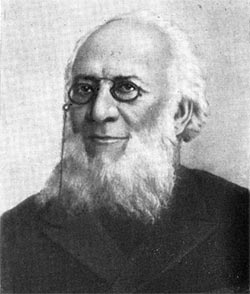
Semyonov decided to penetrate into the region of these mountains. In the first years of his stay in the Geographical Society, he studied many works on the geography of the central parts of the Asian continent and was considered among the geographers the greatest connoisseur of Asia.
But the study of geography from books could not satisfy the young geographer, who was striving for an independent study of nature.
“Mountains attracted me, which, having studied geography in theory, I had not seen in my life,” Semenov said in his memoirs.
It was during these years that part of the Tien Shan began to join Russia. This event, which took place in the middle of the 19th century, contributed to the fact that the study of the gigantic Tien Shan mountain system acquired special significance. Therefore, the route chosen by Semenov was not accidental. When Semenov was preparing for a long journey, at the foot of the Zailiysky Alatau - one of the northern ranges of the Tien Shan - the Verny post (now the city of Alma-Ata, the capital of the Kazakh SSR) was already laid.
In preparation for the trip to the Tien Shan, Petr Petrovich went to the Alps and made many excursions on foot in the mountains without a guide. It was a great training before an expedition to an unknown mountainous country. The scientist collected geological and botanical collections in the Alps. To get better acquainted with volcanic phenomena, he also visited Vesuvius and made about two dozen ascents to the crater of the volcano.
In 1856, Semenov received the consent of the Geographical Society to equip an expedition to Central Asia and set off in the spring.
The travel route ran through Barnaul, Semipalatinsk, the Vernoye fortification and further to the Tien Shan.
Semenov's two trips to Issyk-Kul, especially the second when he visited the western shore of the lake, led to great scientific discoveries. Passing through the narrow Boam Gorge, through which the Chu River carries its waters noisily, Semenov reached the coast of Issyk-Kul. He established that Chu originates not from a lake, but in one of the mountain valleys of the Tien Shan.
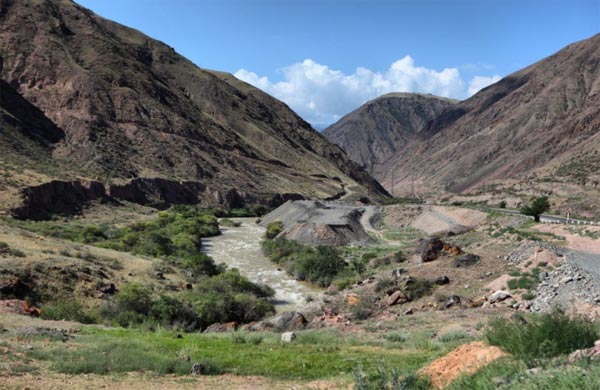
Fascinated by the majestic picture of the Tien Shan mountains, which opened near the lake. Issyk-Kul, Semenov wrote:
“The sharp outlines of the foothills, the dark clefts of the transverse valleys crossing the front chain - all this is softened by a light and transparent haze of fog hovering over the lake, but the clearer, the more definite, in all the smallest details of their outlines, the more brilliant they appear against the dark blue background of the flowery cloudless Central Asian the continental sky, the gray heads of the Tien Shan giants bathed in sunlight.
Semenov managed to penetrate into the heart of the Tien Shan, to these gigantic mountains, only the following year. His companion was the artist P. M. Kosharov, a drawing teacher at the Tomsk gymnasium, who, at the invitation of Pyotr Petrovich, took part in the expedition. Leaving Verny, the travelers reached the southern coast of Issyk-Kul, and from there penetrated to the upper reaches of the Syr Darya, which had not yet been explored or reached by anyone before.
Soon Petr Petrovich made a second, even more successful ascent of the Tien Shan. The route of the expedition was in a more easterly direction than during his first ascent. The difficult path, unexplored by the researchers, led Semenov to the Khan-Tengri mountain group.
The traveler discovered the majestic peak of Khan Tengri, which was considered the highest in the Tien Shan before the discovery of Pobeda Peak by Soviet researchers.
Semenov examined the vast glaciers of the northern slope of Khan Tengri, from where the river originates. Saryjaz.
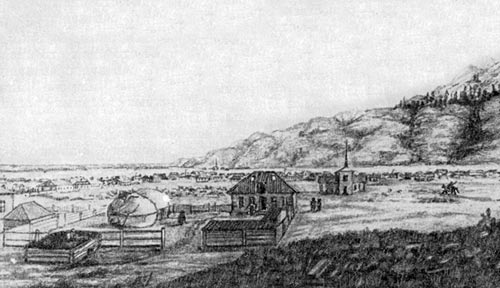
On the way, Pyotr Petrovich often came across the skulls of mountain sheep - kochkars with large curled horns. The skulls were so large and heavy that even a very strong person could hardly lift them. Zoologists believed that the kochkars had completely died out. Imagine Semenov's surprise when one day he saw a large herd of these animals rushing along a mountain path in the distance.
“I could see through my binoculars,” the researcher recalled, “that they were huge sheep with those characteristic horns, whose skulls we found in abundance in the Sarydzhaz valley.”
Semenov's Tien Shan expedition lasted about two years. The traveler's discoveries were captured on the geographical map: the origins of pp. Chu, Syr-Darya and Sarydzhaz, the peak of Khan-Tengri, etc. Petr Petrovich established in general terms the location of the Tien Shan ranges, the height of the snow line in this mountainous region and discovered the huge Tien Shan glaciers.
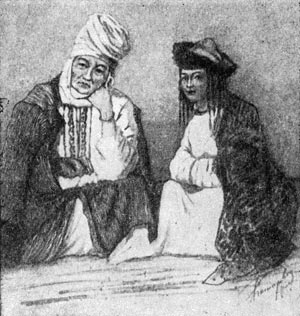
Semenov found out that there are no volcanoes in the Tien Shan. With this important discovery, he refuted Humboldt's erroneous theory about the volcanism of the Celestial Mountains, which was then widespread in science. The scientist also collected versatile information about the geological structure, flora and fauna of the Tien Shan.
These remarkable results were possible because Semenov was an exceptionally versatile researcher-geologist, botanist, zoologist, and, above all, an outstanding geographer. In his views on nature, he was in many ways ahead of contemporary science. So, for example, he studied the dependence of the relief on the geological structure of the area.
The scientist singled out natural zones in the Tien Shan and gave a description of the features of each of them.
Many years after the expedition, for the brilliant exploration of the mountainous country of the Tien Shan, the second part, “Tian Shan”, was added to Semenov’s surname.
All further geographical activities of the scientist are inseparably linked with the history of the Russian Geographical Society, of which he was the leader for many years.
The Geographical Society organized numerous expeditions of outstanding Russian geographers:
N. M. Przhevalsky, G. N. Potanin, V. I. Roborovsky, M. V. Pevtsov, P. K. Kozlov, I. V. Mushketov, V. A. Obruchev and many others.
Petr Petrovich developed expedition routes, participated in their equipment, and in drawing up a program of field scientific work. “The aspiration of every scientist, if he does not want to remain a cold cosmopolitan1, but wants to live one life with his compatriots, it must be, in addition to trying to advance human knowledge absolutely forward, also the desire to introduce its treasures into the life of the people,” Semenov said on the dawn of his scientific activity, on the eve of his trip to the Tien Shan.
On the initiative of Petr Petrovich, extensive works were created on the geographical description of Russia. Under his leadership, a five-volume "Geographical and Statistical Dictionary of the Russian Empire" was compiled, the publication of which continued for almost a quarter of a century. This dictionary - a geographical encyclopedia of Russia remarkable for its time - carefully collected the available information about Russian rivers, lakes, seas, mountain ranges, about different cities, towns, counties, provinces, etc.
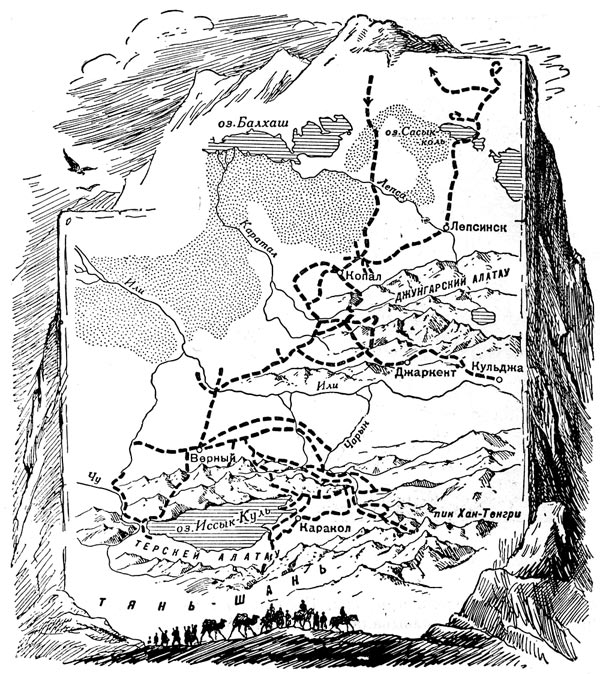
Semenov undertook a number of other publications on the geography of Russia. Already in his declining years, he took over the general management of the multi-volume collective work "Russia", the editor of which was his son Veniamin Petrovich, a famous Russian geographer.
Recalling the glorious labors and exploits of Russian travelers and explorers, Pyotr Petrovich proudly said: "Our glory is the glory of the Russian land."
Semenov-Tyan-Shansky died in 1914, having significantly enriched geographical science with his works.
Yu. M. Shokalsky, who became chairman of the Geographical Society after the death of Semenov-Tyan-Shansky, wrote: “For us, the old workers of the society, the names “Peter Petrovich” and “Geographical Society” are inseparable.”
If you find an error, please highlight a piece of text and click Ctrl+Enter.
